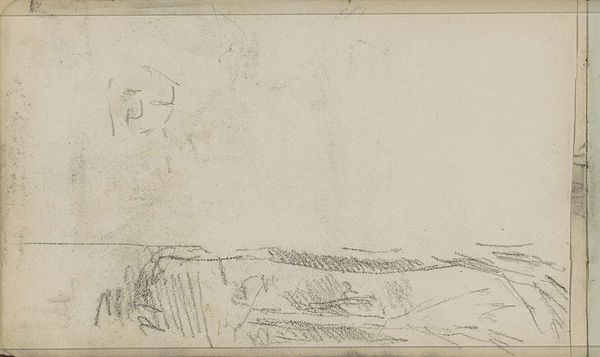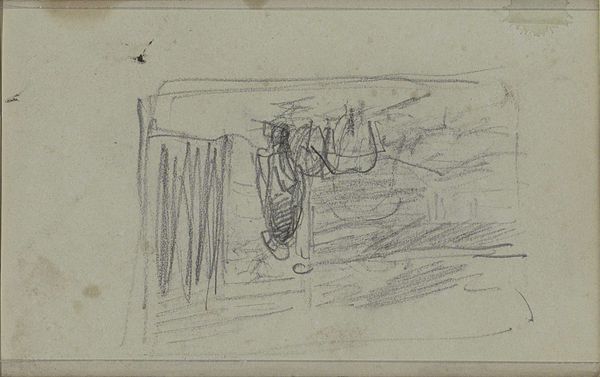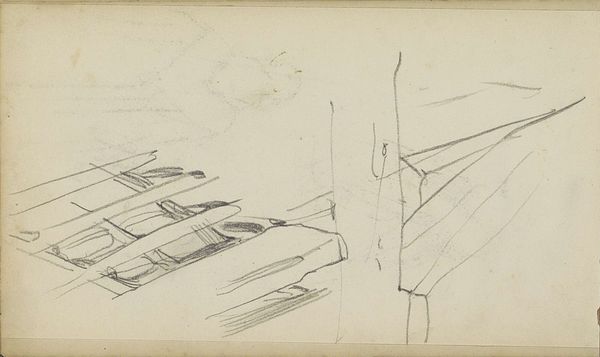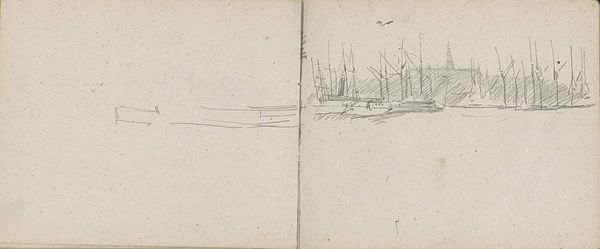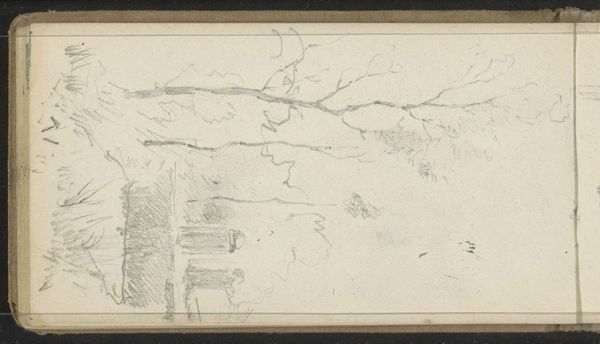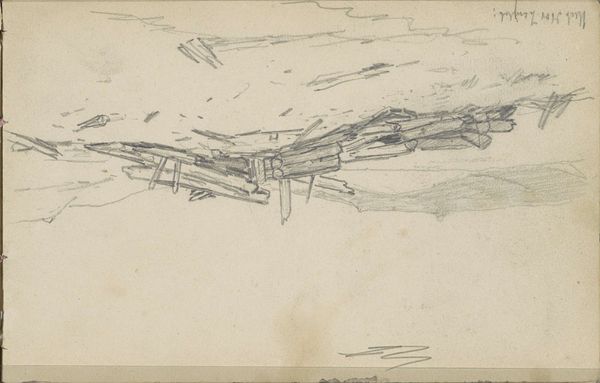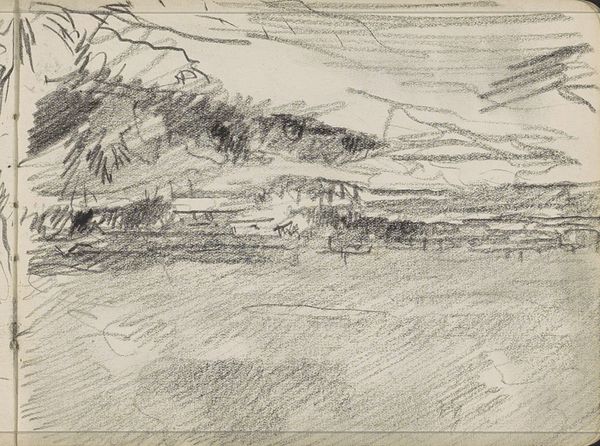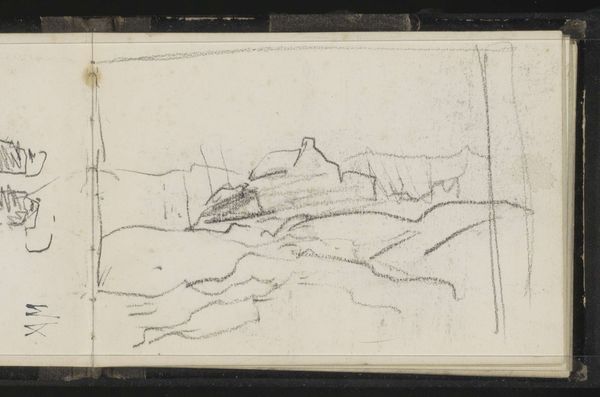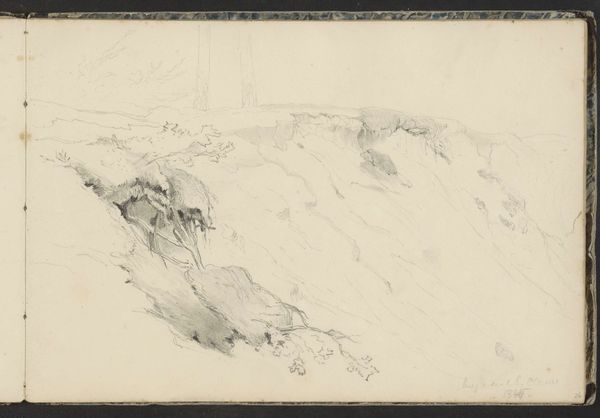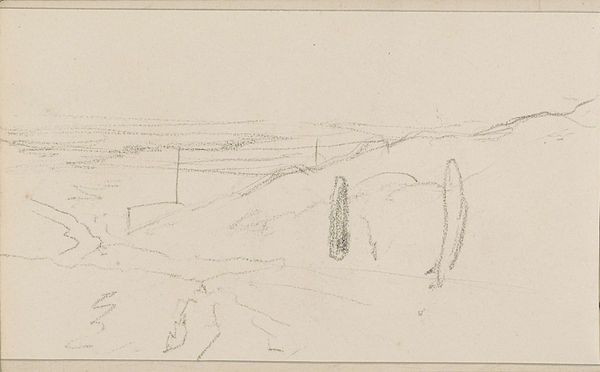
Dimensions: height 139 mm, width 200 mm
Copyright: Rijks Museum: Open Domain
Curator: This drawing, entitled "Kade van de Krom Boomssloot in Amsterdam," comes to us from Willem Witsen and dates to before 1909. It’s part of the Rijksmuseum's collection. Editor: It feels like a fleeting impression, almost melancholic, done in pencil on what looks like heavily textured paper. The lines are very economical, capturing just enough detail to evoke the scene. Curator: The marks certainly have a sense of urgency about them, as though Witsen wanted to capture something before it disappeared. A record in visual shorthand. Look at how the pencil lines vary, some areas quite dark and built up, others barely there. He is summoning atmosphere as much as anything else. What readings or traces do you pick up here? Editor: I am drawn to the paper itself. It doesn't appear pristine. See those marks, perhaps it was re-used or scavenged. The very material suggests a certain scarcity, reflecting the working conditions of the artist. It contrasts starkly with the grand subject of the Amsterdam waterfront. Curator: That’s a fascinating angle. And when we zoom into the reflections of those linear masts, we perceive almost skeletal fingers reaching skyward, their implied stability contradicting the loose surface tension of the river. Perhaps it alludes to unseen or unspoken concerns beyond a straightforward representation of a bustling port. Editor: It prompts us to think about the social implications inherent in such material choices. Was this roughness a deliberate act, to confront or acknowledge class tensions perhaps inherent to representing modern, burgeoning, city life? It asks the viewer to think of the material circumstances inherent in looking itself. Curator: Indeed. Art materials aren't neutral. And that rough surface, then, provides the base of a cultural memory—Amsterdam at a key moment of burgeoning modernization, recorded with readily available and perhaps personally charged tools. Editor: So, a seemingly simple sketch becomes a window into a complex web of historical and cultural considerations. Curator: Precisely. Its brevity almost encourages layers of deeper reading, each as revealing as the last. Thank you for shedding light on its nuances. Editor: My pleasure. It reminds me of the power found even in the most modest of materials, transformed by an observing hand.
Comments
No comments
Be the first to comment and join the conversation on the ultimate creative platform.

